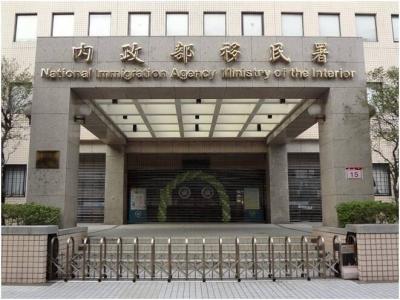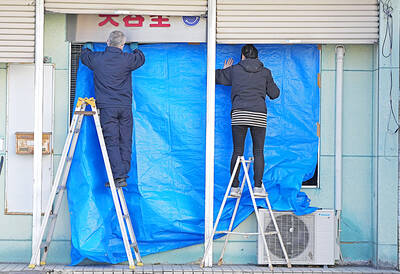Taiwan is to draw on the experience of an ongoing program to upgrade two of its aging submarines to support a project to build its own submarines, an institute contracted to conduct the programs said yesterday.
Chungshan Institute of Science and Technology officials said in a report prepared for a legislative hearing yesterday that the institute has completed an evaluation of periscope upgrades for the two Chien Lung-class submarines and has begun reviewing a design to upgrade their weapons systems.
That experience will help support the Ministry of National Defense’s indigenous submarine project, the report said.
The report said the institute is discussing a design for the weapons systems of the planned homegrown submarines and other issues with shipbuilder CSBC Corp, Taiwan — the contractor for the nation’s indigenous submarine and the navy’s submarine programs.
A total of NT$2.9 billion (US$95.45 million) is to be budgeted from December last year to December 2020 for the design of the vessels, a ministry report to the legislature on the indigenous submarine and jet trainer programs showed.
Military officials said at yesterday’s hearing that the local submarine program aims to build eight vessels and will still need assistance and technologies from the US.
CSBC said the first indigenous submarine can be built in eight years and enter service with the navy in 10 years after its design is completed.
CSBC chairman Cheng Wen-lon (鄭文隆) said the company, after the completion of the first submarine, could produce one submarine every four years.
Late last month, CSBC and the institute signed a memorandum of understanding with the navy to jointly build submarines for the military.
The first homegrown submarines are to be built within eight years and would be able to be commissioned into service within a decade, the shipbuilder said.
As for the program to upgrade the two Chien Lung-class submarines Taiwan purchased from the Netherlands in the 1980s, the institute said in its report that it would refer to the designs of weapons systems on other naval ships and enlist the help of foreign defense companies to extend the life of the aging submarines.
The program would also rely primarily on domestically manufactured components in an attempt to boost the nation’s defense industry, the report said.
Taiwan has long tried to acquire submarines from other nations with little success because of reluctance to upset China.
Then-US president George W. Bush in 2001 authorized the sale of eight diesel electric submarines to Taiwan, but the deal never came to fruition because of political wrangling in Taiwan and questions over whether the US, which did not produce conventional submarines at the time, could supply the vessels.
Taiwan has four submarines, including two World War II-era boats purchased from the US in the 1970s.
As for the indigenous advanced jet trainer program, designs for the aircraft’s exterior and interior have been completed and an initial review of the design of the aircraft is scheduled for next month, the institute’s report said.
The ministry has allocated a 12-year budget of NT$68.6 billion to build 66 jet trainers, with the first prototype scheduled to be completed by September 2019, the first trial flight to be conducted by June 2020 and the whole fleet of 66 airplanes to be delivered by 2026.
The trainer jet program is estimated to create up to NT$205.8 billion in private investment.
Additional reporting by Chen Wei-han

A small number of Taiwanese this year lost their citizenship rights after traveling in China and obtaining a one-time Chinese passport to cross the border into Russia, a source said today. The people signed up through Chinese travel agencies for tours of neighboring Russia with companies claiming they could obtain Russian visas and fast-track border clearance, the source said on condition of anonymity. The travelers were actually issued one-time-use Chinese passports, they said. Taiwanese are prohibited from holding a Chinese passport or household registration. If found to have a Chinese ID, they may lose their resident status under Article 9-1

Taiwanese were praised for their composure after a video filmed by Taiwanese tourists capturing the moment a magnitude 7.5 earthquake struck Japan’s Aomori Prefecture went viral on social media. The video shows a hotel room shaking violently amid Monday’s quake, with objects falling to the ground. Two Taiwanese began filming with their mobile phones, while two others held the sides of a TV to prevent it from falling. When the shaking stopped, the pair calmly took down the TV and laid it flat on a tatami mat, the video shows. The video also captured the group talking about the safety of their companions bathing

PROBLEMATIC APP: Citing more than 1,000 fraud cases, the government is taking the app down for a year, but opposition voices are calling it censorship Chinese Nationalist Party (KMT) Chairwoman Cheng Li-wun (鄭麗文) yesterday decried a government plan to suspend access to Chinese social media platform Xiaohongshu (小紅書) for one year as censorship, while the Presidential Office backed the plan. The Ministry of the Interior on Thursday cited security risks and accusations that the Instagram-like app, known as Rednote in English, had figured in more than 1,700 fraud cases since last year. The company, which has about 3 million users in Taiwan, has not yet responded to requests for comment. “Many people online are already asking ‘How to climb over the firewall to access Xiaohongshu,’” Cheng posted on

A classified Pentagon-produced, multiyear assessment — the Overmatch brief — highlighted unreported Chinese capabilities to destroy US military assets and identified US supply chain choke points, painting a disturbing picture of waning US military might, a New York Times editorial published on Monday said. US Secretary of Defense Pete Hegseth’s comments in November last year that “we lose every time” in Pentagon-conducted war games pitting the US against China further highlighted the uncertainty about the US’ capability to intervene in the event of a Chinese invasion of Taiwan. “It shows the Pentagon’s overreliance on expensive, vulnerable weapons as adversaries field cheap, technologically